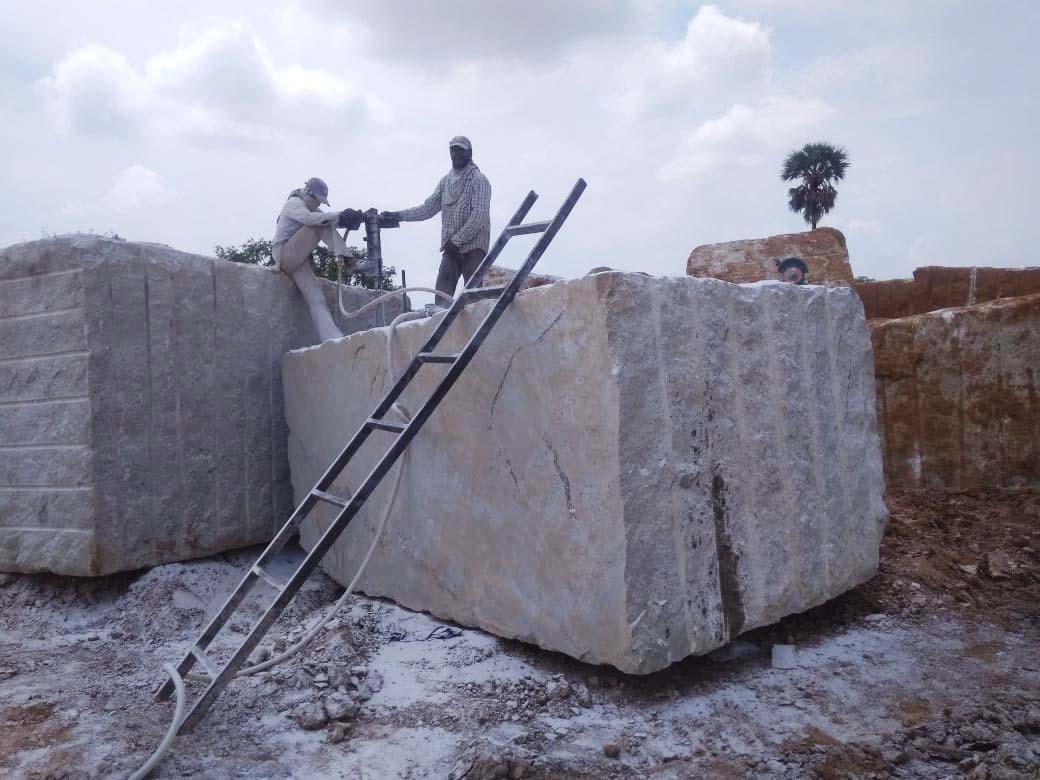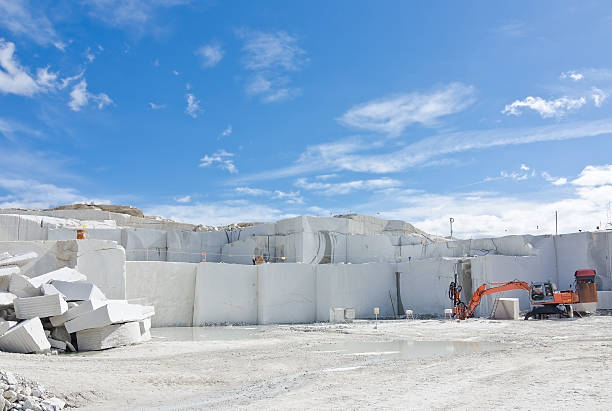Unveiling Granite Quarries in South Africa Legacy: A Trip With Quarries
Unveiling Granite Quarries in South Africa Legacy: A Trip With Quarries
Blog Article
Revealing the Mysteries of Granite Quarrying: Where Toughness and Elegance Meet
The world of granite quarrying is a realm where the raw toughness of nature merges with human artistry to produce frameworks that stand the examination of time with an air of elegance. From the depths of quarries to the careful sprucing up in workshops, the procedure of changing granite into architectural marvels is a complicated dancing of practice and innovation. As we peer into the depths of this ancient craft, we begin to discover the concealed details that form the very essence of our built environment.
The Origins of Granite Quarrying
In the annals of architectural history, the origins of granite quarrying are shrouded in a tapestry of ancient craftsmanship and geological marvels. Dating back to ancient Egypt and Mesopotamia, the extraction of granite from quarries marked the beginning of a trip that would eventually result in the development of several of the world's most iconic structures.
Granite quarrying's origins can be traced to the experienced craftsmens that identified the stone's durability and aesthetic charm. With a mix of primitive tools and sheer determination, these very early quarry employees uncovered granite blocks that would become the building blocks of worlds.
As worlds developed, so did the strategies of quarrying granite. The Romans, renowned for their design expertise, created sophisticated techniques for extracting granite to create monuments, holy places, and roads that stood the examination of time.
The tradition of these ancient quarrying techniques continues to form contemporary architecture, with granite remaining a symbol of toughness and sophistication in construction projects around the globe. (granite quarries in south africa)
Devices of the Quarrying Profession
The evolution of granite quarrying techniques from old human beings to modern times highlights the critical duty played by the tools of the quarrying profession in forming the market's practices. In ancient times, quarrying devices were simple, often consisting of knives, hammers, and wedges made from materials like bronze or iron. These devices required substantial manpower and time to extract granite obstructs from quarries.

In addition, the intro of pneumatically-driven devices and high-powered equipment has actually substantially minimized the physical labor called for in quarrying procedures, improving worker security and efficiency. As the quarrying industry continues to innovate, the devices of the profession stay at the leading edge of driving development and shaping the future of granite extraction.
Removing Blocks of Granite
Making use of precision machinery and progressed techniques, the removal of granite blocks from quarries has actually ended up being an advanced procedure in the modern-day quarrying market. Regulated blowing up techniques are then employed to damage apart the granite right into manageable areas.

Sprucing Up and Completing Techniques
To attain a perfect surface on granite blocks, knowledgeable artisans employ a collection of precise sprucing up and completing techniques. After the preliminary extraction and forming processes, the granite obstructs undergo a detailed sprucing up stage to improve their all-natural appeal and resilience. One usual method made use of in polishing granite is ruby abrasion, where industrial diamonds are made use of to grind and polish the rock to a smooth finish. This procedure not only develops a lustrous surface area but likewise ensures harmony in shade and texture throughout the granite block.
In enhancement to sprucing use this link up, completing methods are applied to further refine the granite's appearance. By carefully picking and using these brightening and completing techniques, artisans can change raw granite obstructs into splendid pieces that showcase both strength and elegance.

Environmental Effect and Sustainability
With the growing emphasis on ecological awareness in the market, granite quarrying techniques are significantly looked at for their influence on natural deposits and long-term sustainability. Quarrying for granite can have substantial environmental effects. The extraction process usually includes the usage of heavy equipment, explosives, and big quantities of water, bring about habitat destruction, dirt erosion, and water air pollution. Additionally, the transport of granite from quarries to processing facilities generates see post carbon emissions, further contributing to ecological destruction. granite quarries in south africa.
To reduce these effects and make sure sustainability in granite quarrying, market stakeholders are taking on numerous actions. Applying advanced technologies to reduce energy consumption and water usage, reclaiming quarried land for ecological restoration, and promoting liable sourcing techniques are some approaches being used. Accreditations such as the Forest Stewardship Council (FSC) and the Management in Power and Environmental Style (LEED) assistance consumers determine environmentally pleasant granite items.
Conclusion
To conclude, granite quarrying is a process that needs specialized tools and techniques to extract blocks of granite and polish them to a high degree of coating. While the ecological effect of quarrying can be considerable, efforts are being made to enhance sustainability practices in the industry. Overall, granite quarrying is a fragile equilibrium between utilizing the strength and elegance of this all-natural rock while lessening its influence on the atmosphere.
Report this page